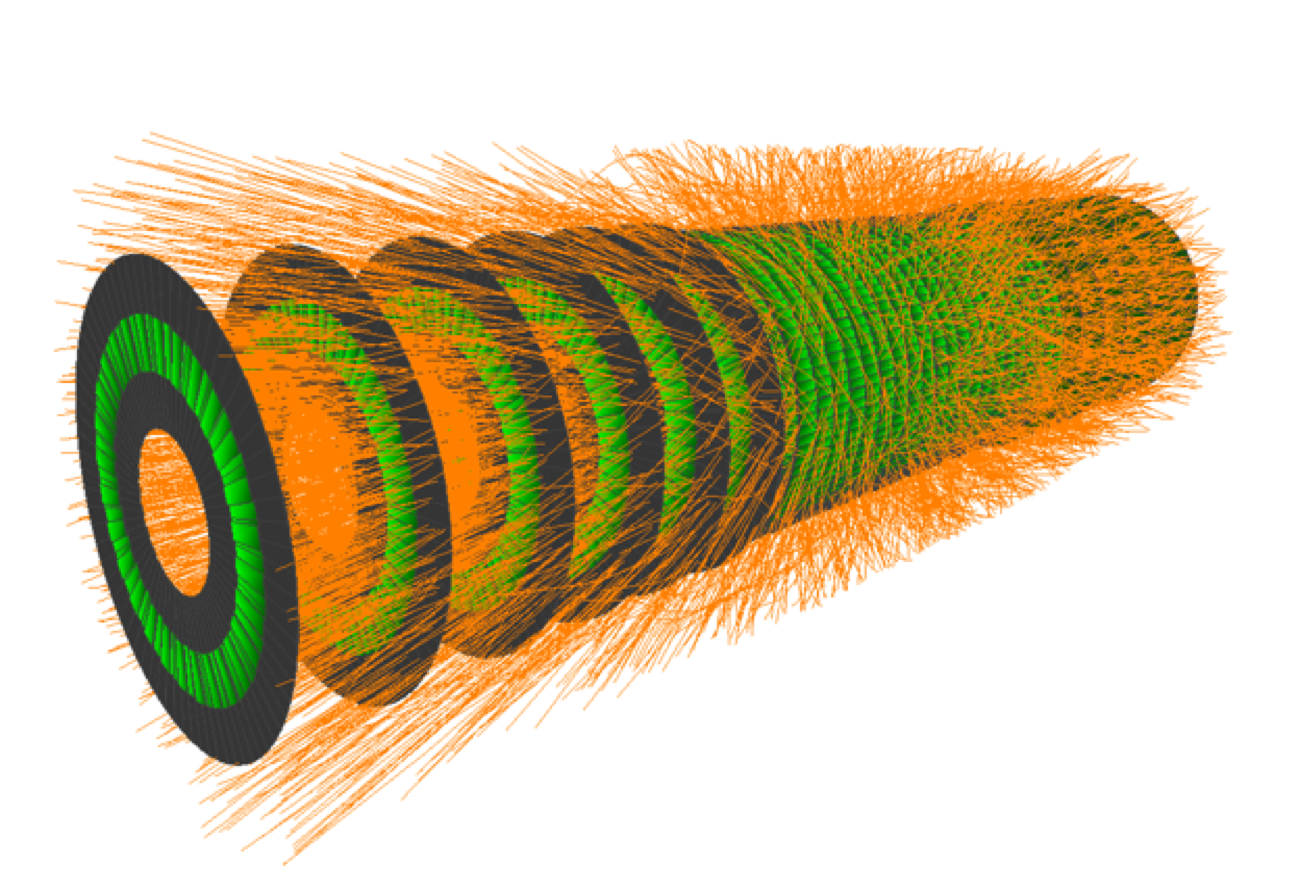This repository contains my approach that won a gold medal (11th place) in the TrackML Particle Tracking Challenge on Kaggle.
It use a unsupervised algorithm (DBSCAN - density based spatial algorithm) to cluster hits of the same track and a supervised classification algorithm (LightGBM - a gradient boosting framework) to further extend the start and end of each track.
Check Documentation.pdf to learn more about it!
These instructions will get you a copy of the project up and running on your local machine for development and testing purposes. For any problem please contact me at andri27@hotmail.it
What things you need to install the software and the minimum hardware required.
To run the code it's required Python 3.5.2 or newer. The libraries required can be installed running
pip install -r requirements.txt
git clone https://github.com/LAL/trackml-library
pip install --user --editable trackml-library
To train the models are required at least 4GB of RAM. The models has been trained in less than 2 hours on a low performance 4 cores CPU, whereas the test predictions (all the 125 events) has been done on a 48 cores high performance CPU in about 5 hours.
Download 'test.zip' and 'train_sample.zip' from Kaggle and unzip the files in the data folder
To build the model run the following command
python train.py -s models/model_start.lgb -e models/model_end.lgb --num_train_events 10 --num_valid_events 2
Arguments:
-s <start_model_path> output model's path to extend the hits at the start of the track
-e <end_model_path> output model's path to extend the hits at the end of the track
--num_train_event <number_events> number of events to use for the train
--num_valid_event <number_events> number of events to use for the validation
Note: in the repository are already available the models trained on 10 events: models/gbm_start_10x.lgb and models/gbm_end_10x.lgb
The predictions can be done using only unsupervised algorithm (it reach about 0.69 of score)..
python predict.py -s models/model_start.lgb -e models/model_end.lgb --with_supervised 0 --predictions train
.. or both unsupervised and supervised (it reach about 0.76 of score)
python predict.py -s models/model_start.lgb -e models/model_end.lgb --with_supervised 1 --predictions train
Arguments:
-s <start_model_path> input model's path to extend the start of the track
-e <end_model_path> input model's path to extend the end of the track
--with_supervised <0 or 1> With *0* use only unsupervised models. With *1* use unsupervised and supervised.
--predictions <train or test> With *train*, it predict on train events. With *test* it predict on test events.
Documentation.pdf -> Project documentation
detector_geometry.py -> Contains the code to predict the volume, layer and module of a hit.
merging_tracks.py -> Contains functions to merge two or more tracks
predict.py -> Predict the tracks
supervised_track_extension.py -> Contains the functions needed to create the tracks extension models
track_clustering.py -> Code to cluster the hits unrolling them to different angles
train.py -> Train the models to extend the tracks
utils.py -> Contains additional functions
